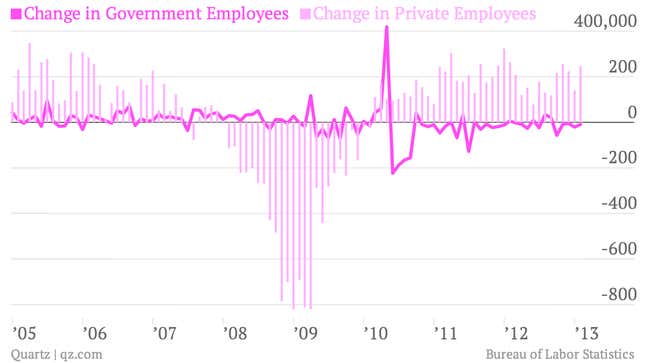
Last Friday showed a bigger-than-expected rise in new American jobs. But will that continue as the automated budget cuts known as sequestration take effect?
The paler pink columns track the monthly change in private sector employees—dropping steeply in the crisis but returning to moderate monthly increases since 2010. The recovery has been driven by the private sector, and lately, by the slow return of the housing markets.
The brighter pink line tracks the monthly change in the number of government employees. Before the crisis, government hiring was low if mostly positive. Since the recession, however, federal and local government has been steadily shedding jobs (the spike in 2010 was the temporary hiring for America’s once-a-decade census effort) despite some expectation that it might counteract some of the effects of the downturn by bringing on new workers.
This pops the bubble on the myth that America’s stimulus policies were aimed at increasing government employment. Public sector cut-backs have hit mostly on the state and local levels, especially among teachers, but the effects have been masked by net gains in total employment over the last few years.
It also makes it clear that with sequestration now under way—though it isn’t too late to expect some of those spending cuts to be adjusted—the rate of job growth is likely to slow. Economists expect employment to hit a soft patch in April and May if the cuts do take hold, and one of the places to look is at government employees. They will be the first targets of federal cut-backs, alongside contractors who are counted as part of the private sector but work for government agencies.